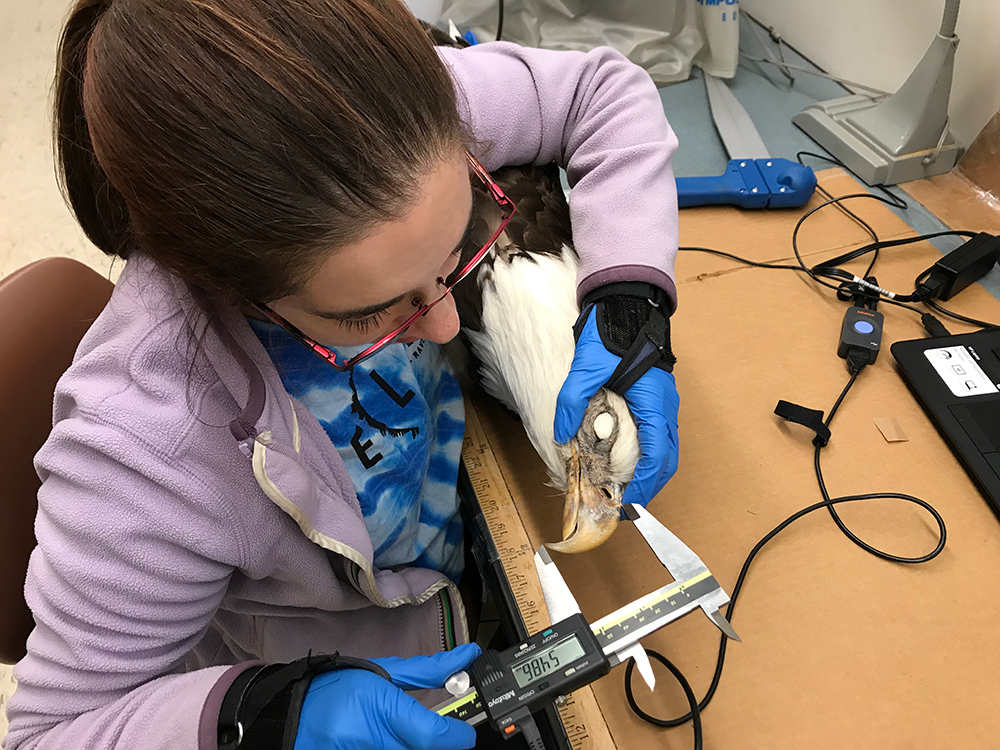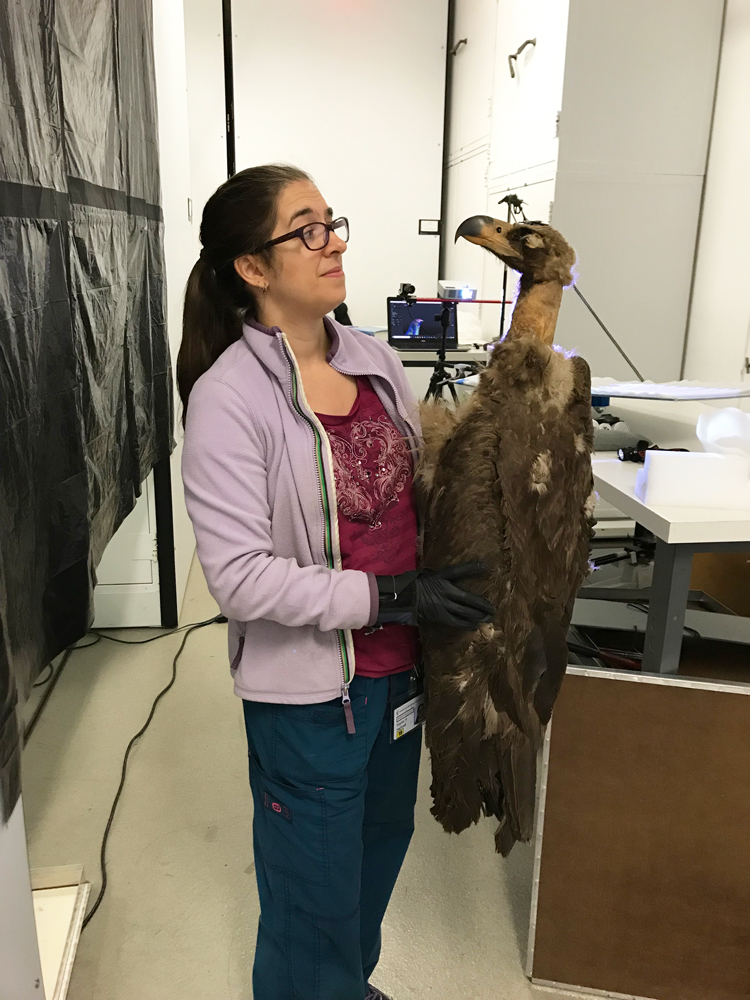
Shanta Hejmadi
Research Q & A
What’s your hometown?
Colorado Springs, Colorado, but I’ve lived in the Twin Cities since 2001.
What are you currently working on?
I am working on a project that begins by asking how globally distributed guilds of birds are related to each other, how functionally similar they are to each other, how fast they evolve, and where they come from. My research goes further, and asks whether knowing these things can tell us anything about how their communities assemble and whether these kinds of data can be applied to real-world conservation problems. Specifically, I am working with diurnal birds of prey, raptors in the orders Accipitriformes (hawks, eagles, vultures) and Falconiformes (falcons and caracaras), a group of about 333 species. My Bell Museum funding has been primarily used in collecting a morphological dataset that includes 1107 specimens of 308 species over the last two summers. I collect linear measurements from the feet, wings, and beak of museum skins and 3D scans of the beaks.
How are you working toward that goal?
I have been collecting morphological data on museum specimens for the last two summers, and I have almost completed my dataset. I will also be getting tissues and toe pads from specimens to sequence their DNA and reconstruct a complete phylogenetic tree for these 333 species. I have begun some preliminary analyses based on these morphological data, and I’m very excited to incorporate more of what I’ve collected.
Why are you focusing your work in that area?
I love birds and I’m interested in the intersections of ecology and evolution research. The projects that really get me excited involve a lot of different species, huge spatial scales, and potential applications to conservation.
Where are you working on research/field work?
I collect my data at the Field Museum of Natural History in Chicago, the American Museum of Natural History in New York City, and the Bell Museum, right here at home!
What will your next steps/research be?
Now that I’ve passed my preliminary exams, I am ready for a deep dive into my 3D data and the functional ecology data my undergraduate collaborators have been collecting, as well as starting to collect tissues and toe-pads for DNA sequencing.




